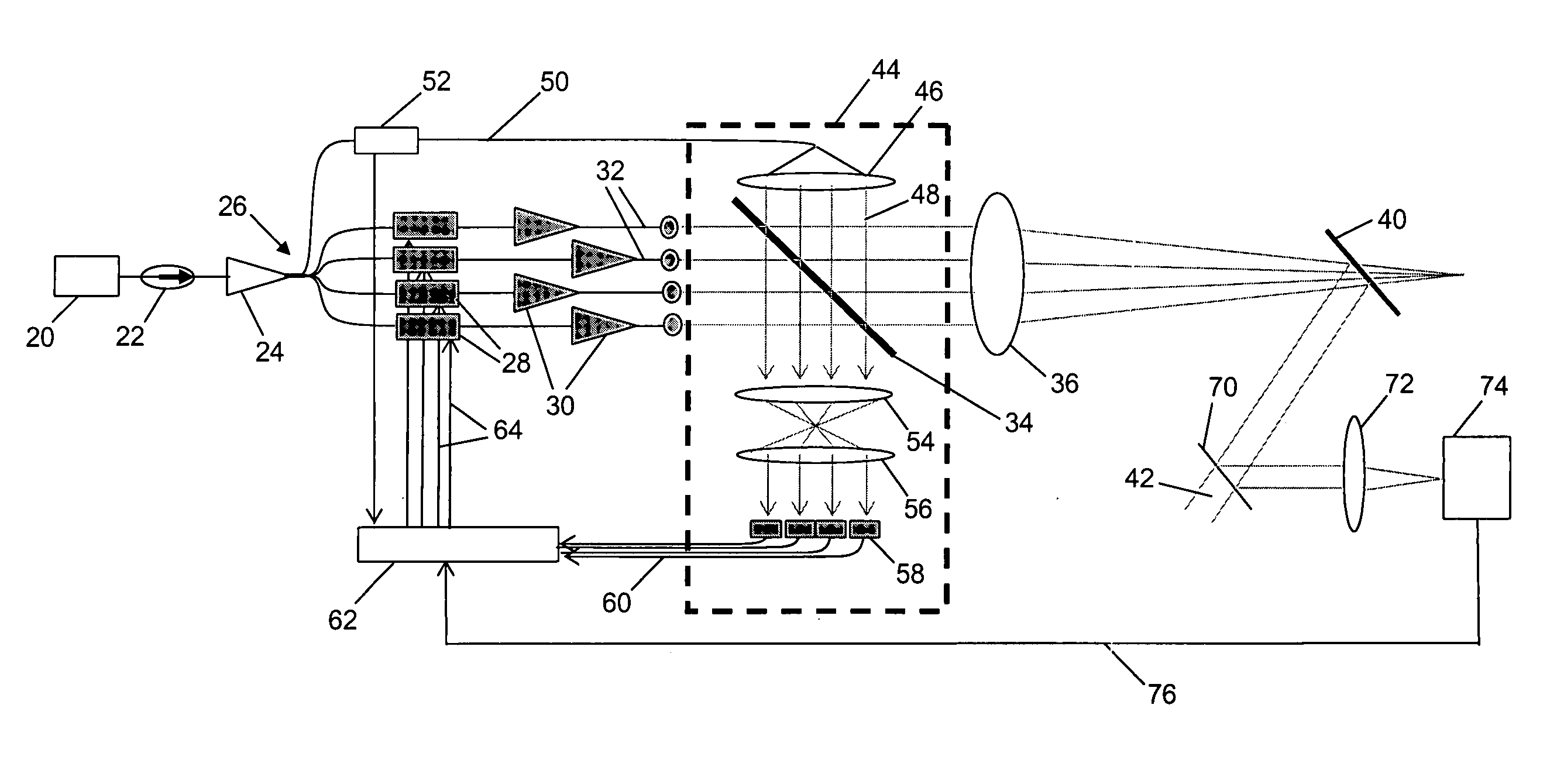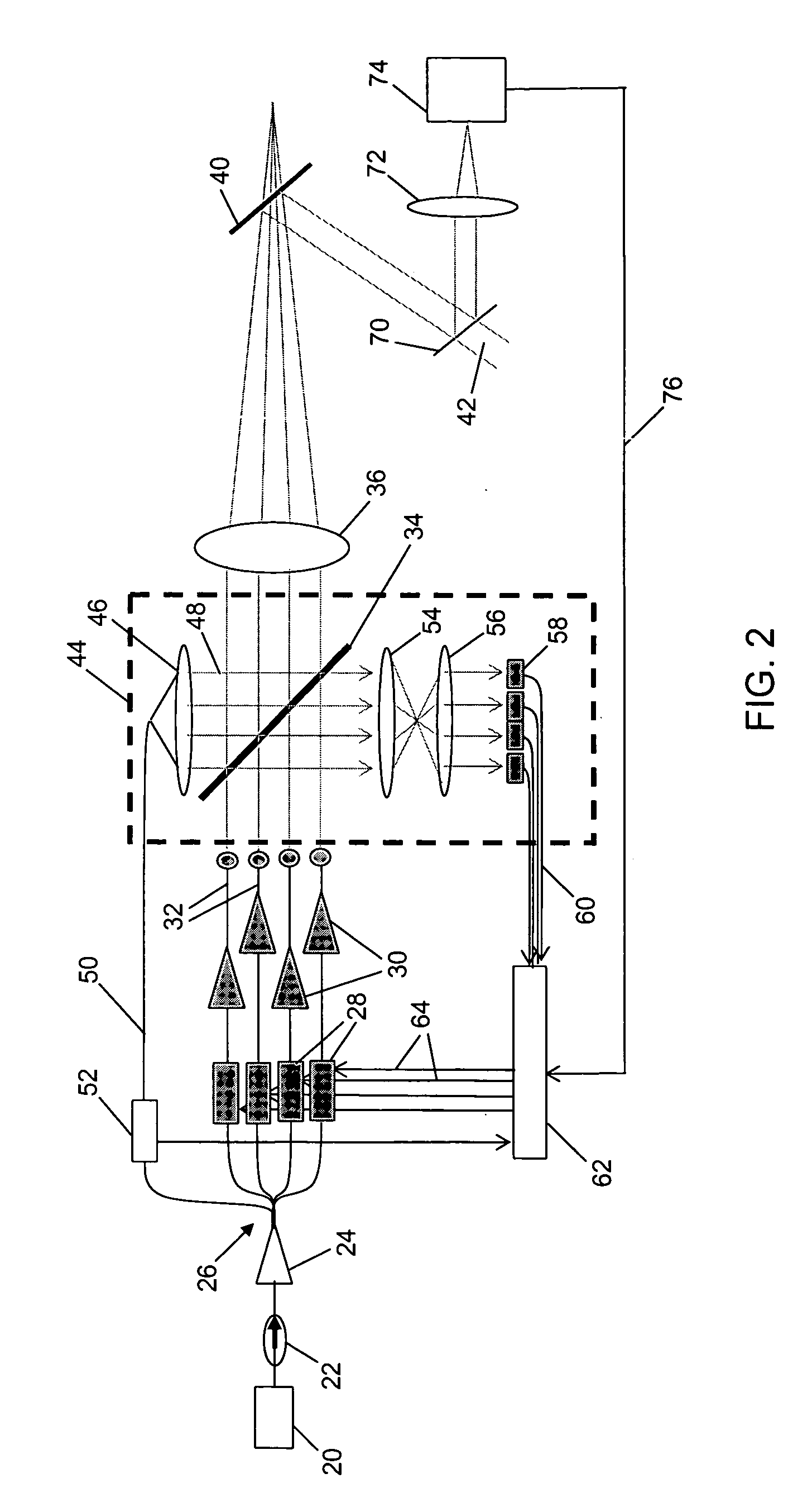Coherent fiber diffractive optical element beam combiner
a beam combiner and optical element technology, applied in the field of high-power lasers, can solve the problems of inability to achieve sbsa, especially a fiber array, significant limitations in the performance of such arrays, and achieve the effect of facilitating heat dissipation
- Summary
- Abstract
- Description
- Claims
- Application Information
AI Technical Summary
Benefits of technology
Problems solved by technology
Method used
Image
Examples
Embodiment Construction
[0014] As shown in the drawings for purposes of illustration, the present invention is concerned with high power laser systems in which beams emitted from multiple fiber amplifiers are combined by means of a diffractive optical element (DOE). Since the use of a DOE is central to the invention, a brief summary of diffractive grating principles would be useful at this point.
[0015] It is well known that light impinging on a plate having multiple parallel slits is diffracted in such a manner that light emerging from the multiple slits forms a characteristic interference pattern, with one central bright band and multiple, equally spaced bright bands on each side of the central band. The central band is referred to as the 0th diffraction order output, the next adjacent bands are referred to as being of diffraction orders +1 and −1, the next bands are said to of diffraction orders +2 and −2, and so forth. A transmissive diffractive grating is basically an opaque plate having a large numbe...
PUM
 Login to View More
Login to View More Abstract
Description
Claims
Application Information
 Login to View More
Login to View More - R&D
- Intellectual Property
- Life Sciences
- Materials
- Tech Scout
- Unparalleled Data Quality
- Higher Quality Content
- 60% Fewer Hallucinations
Browse by: Latest US Patents, China's latest patents, Technical Efficacy Thesaurus, Application Domain, Technology Topic, Popular Technical Reports.
© 2025 PatSnap. All rights reserved.Legal|Privacy policy|Modern Slavery Act Transparency Statement|Sitemap|About US| Contact US: help@patsnap.com



